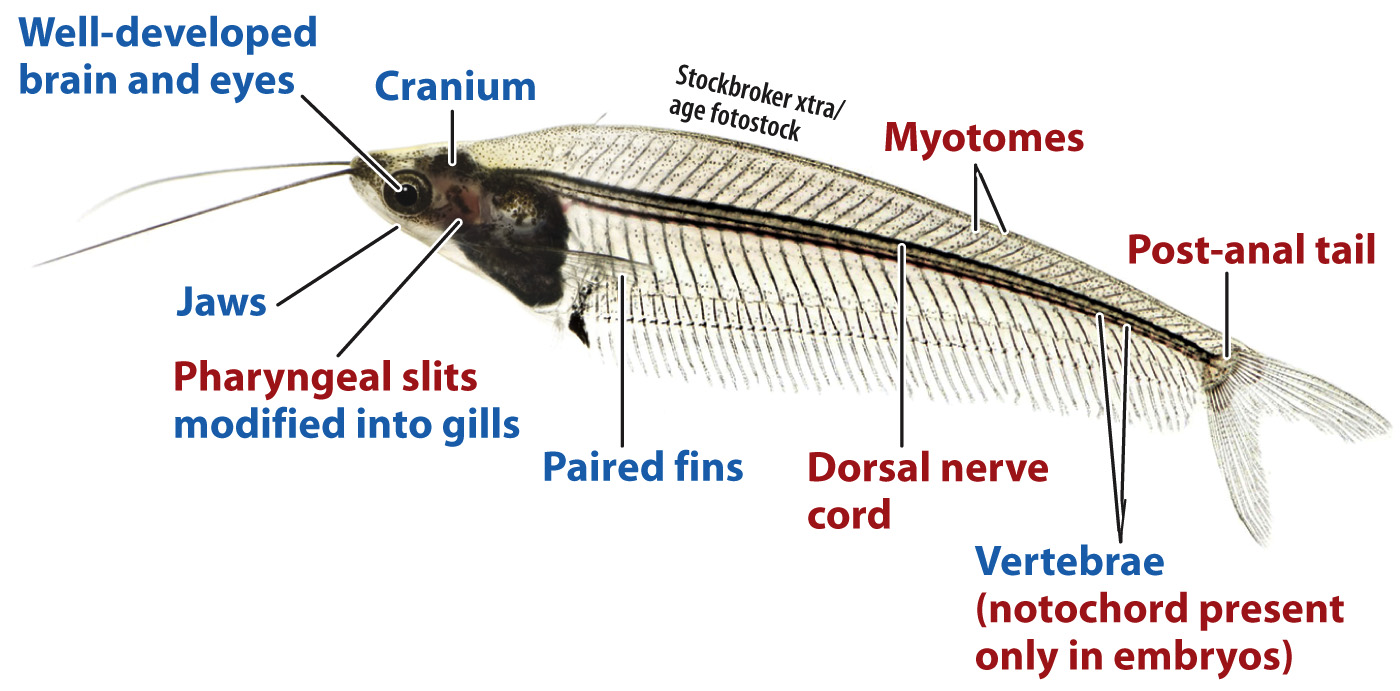44.4 Vertebrate Diversity
In many ways, the last stop on our tour of animal diversity is the most familiar because it includes our own species, Homo sapiens. The animals known as vertebrates are named for their jointed skeleton, which runs along the main axis of the body, forming a series of hard segments collectively termed vertebrae (singular, vertebra). In addition to features shared with other chordates, vertebrate animals are distinguished by a cranium that protects a well-

Many of the features that separate vertebrates from invertebrate chordates can be found in the head, including a bony cranium that protects the brain, joined in most vertebrates by the mandible (or jawbone) to form a skull. This protective helmet for the delicate neuronal tissues permits the development of a larger brain than would otherwise be possible. The mandible permits eating foods such as other living animals, themselves often protected by hard shells, and plants containing tough cellulose and lignin. Because the bottom scavenger hagfish have a cranium but not vertebrae (or a mandible), some biologists use the name “Craniata” for this group, rather than the traditional “Vertebrata.”